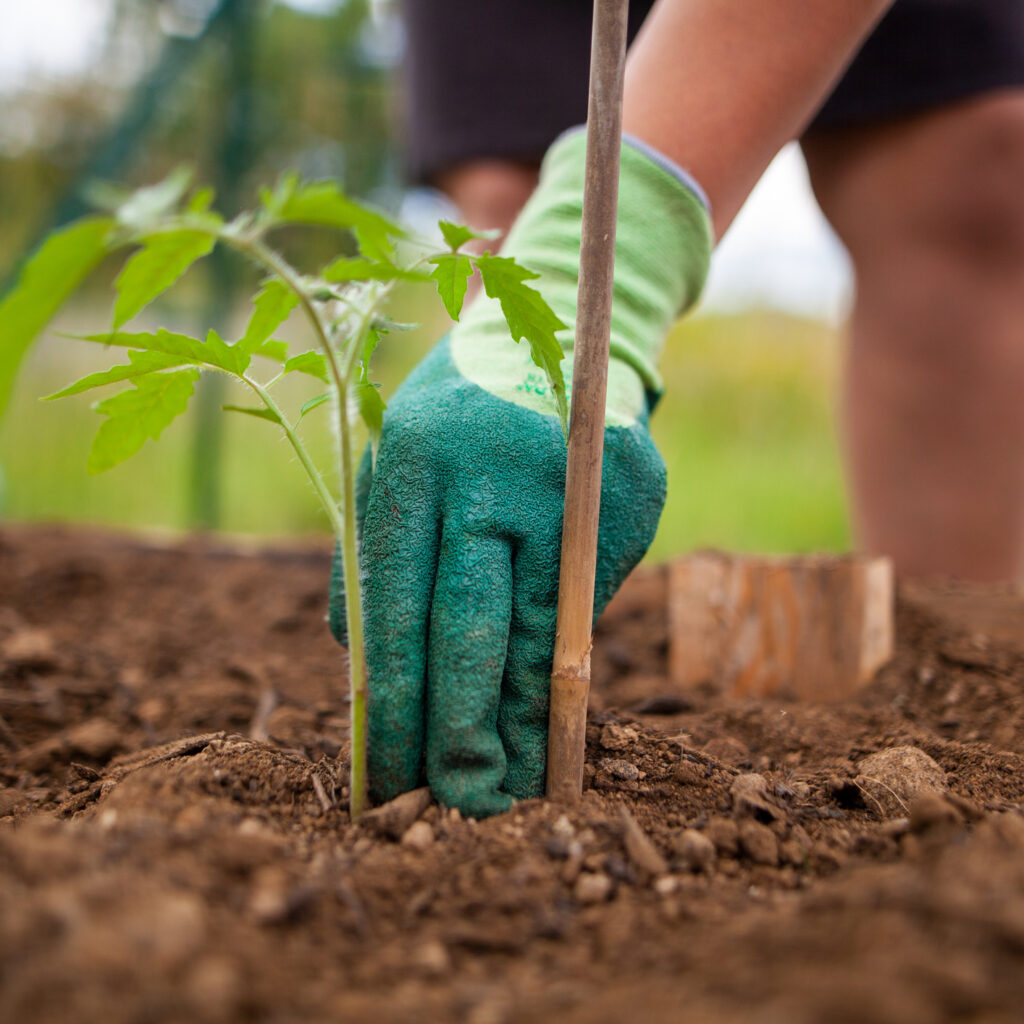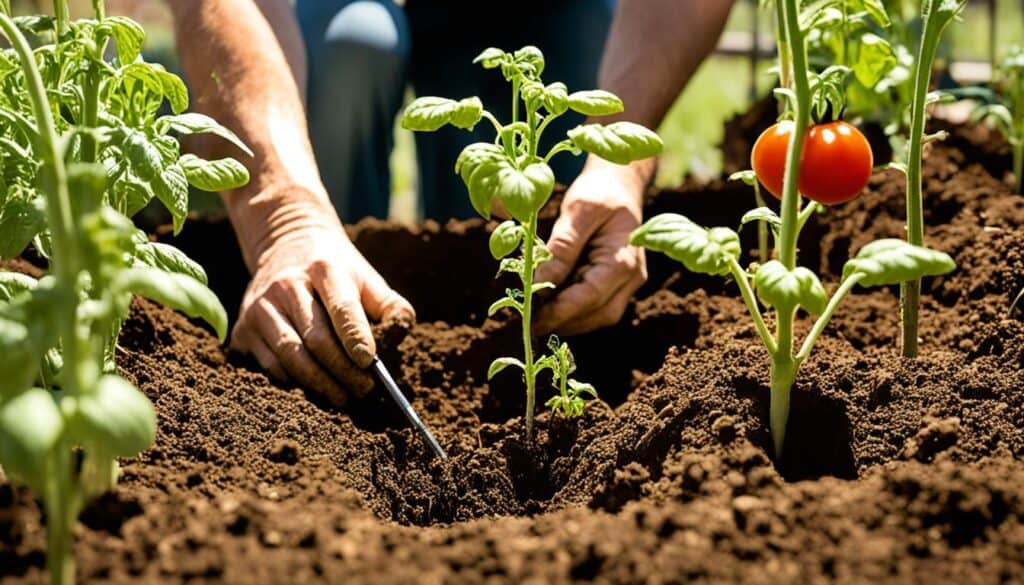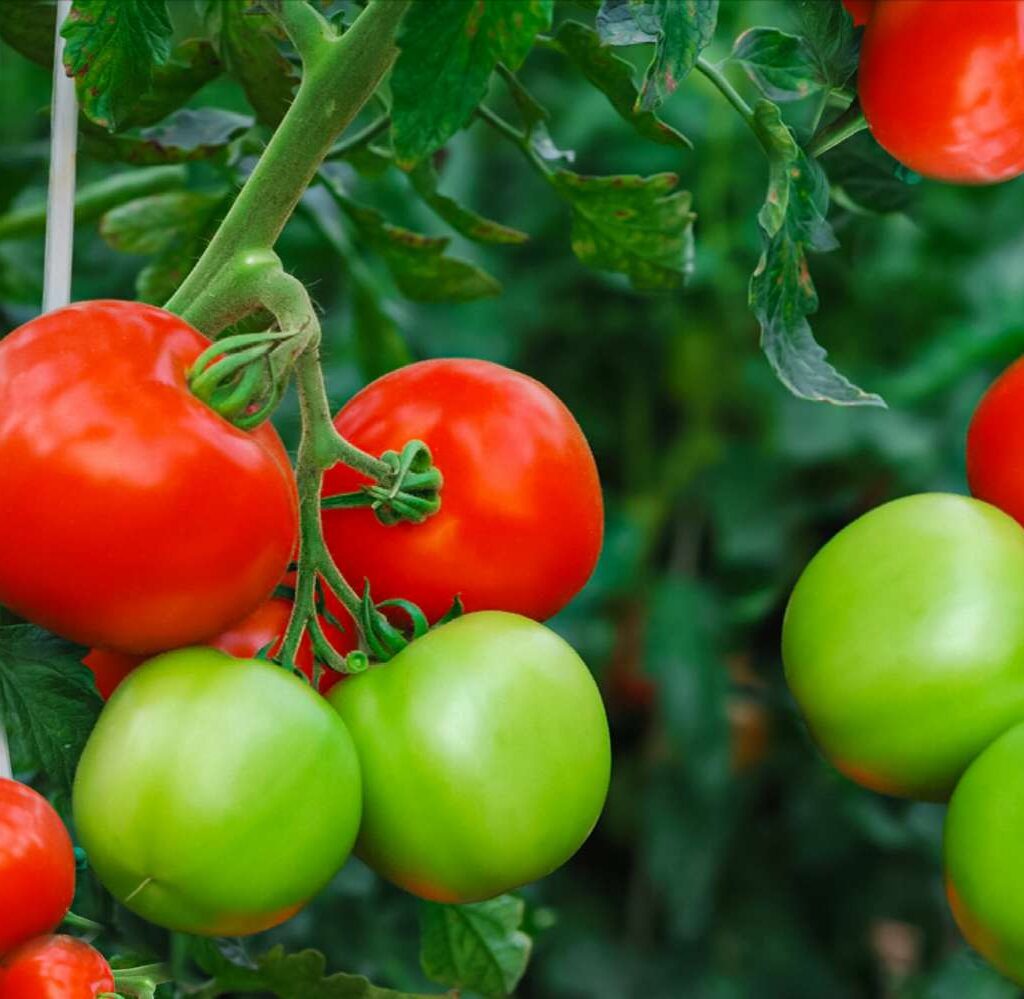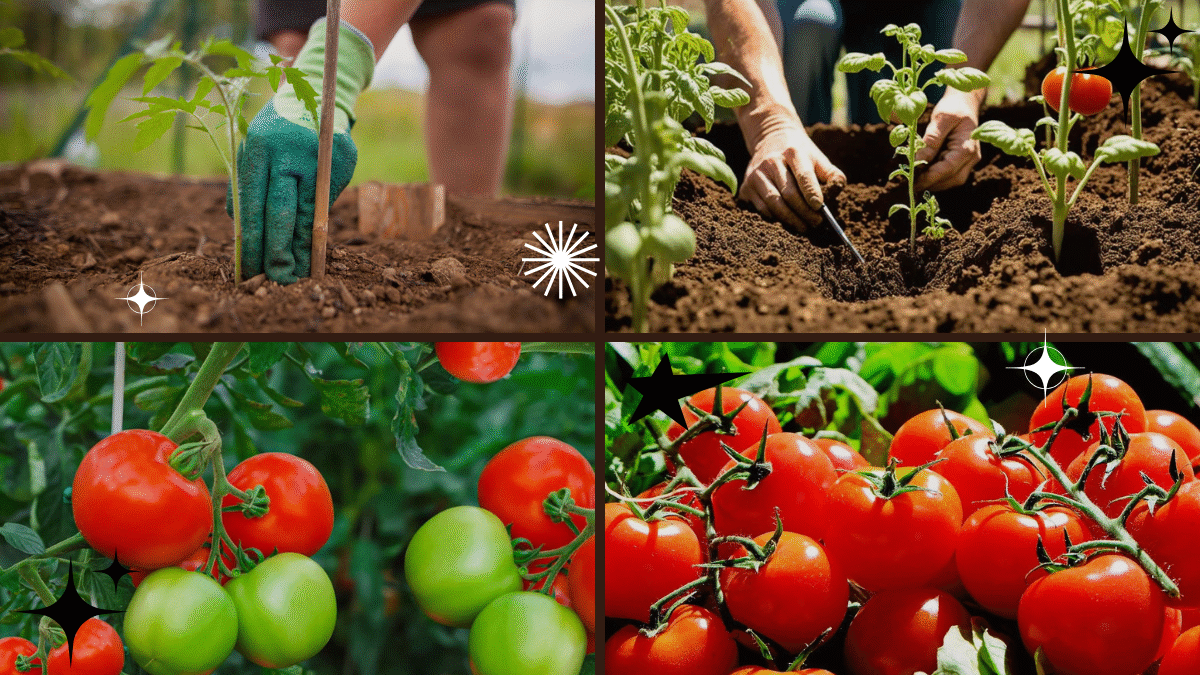Tomatoes are among the most popular and rewarding plants to grow in home gardens. Whether you’re a beginner or an experienced gardener, planting tomato plants correctly can dramatically improve your chances of harvesting an abundant crop of juicy, flavorful tomatoes.
From selecting the right varieties to mastering soil preparation, planting techniques, watering, and care, this comprehensive guide will walk you through how to plant tomato plants for bountiful harvests and keep your garden thriving all season long.

Why Grow Tomatoes?
Tomatoes are incredibly versatile — perfect for fresh salads, sauces, salsas, and even preserving. Growing your own ensures you get fresh, organic fruit free from pesticides. Plus, nothing beats the flavor and satisfaction of homegrown tomatoes picked at peak ripeness.

Choosing the Right Tomato Variety
Tomato plants come in thousands of varieties, broadly categorized into two types:
1. Determinate (Bush) Tomatoes
- Grow to a certain height (2-4 feet) and then stop.
- Produce all their fruit in a short period, typically 1-2 weeks.
- Ideal for container gardening or small spaces.
- Examples: ‘Roma,’ ‘Celebrity,’ ‘Patio’
2. Indeterminate (Vining) Tomatoes
- Keep growing and producing fruit throughout the season until frost.
- Require staking or caging.
- Typically yield larger harvests over time.
- Examples: ‘Beefsteak,’ ‘Cherry,’ ‘Brandywine’
For bountiful harvests, indeterminate varieties are often preferred because of their extended fruiting period. But determinate types are easier to manage and great for beginners or limited spaces.

When to Plant Tomato Plants
Timing is critical for successful tomato growth. Tomatoes are warm-season plants and do not tolerate frost.
- Start seeds indoors 6-8 weeks before the last expected frost date in your region.
- Transplant seedlings outdoors only after all danger of frost has passed and the soil has warmed to at least 60°F (15°C).
- For container tomatoes, you can extend the growing season by starting indoors or placing pots in a greenhouse or sunny porch.

Preparing the Soil for Tomatoes
Tomatoes thrive in well-draining, fertile soil with a slightly acidic to neutral pH of 6.0 to 7.0.
Steps to prepare soil:
- Choose a sunny location — tomatoes require at least 6-8 hours of direct sunlight daily for best growth and fruit production.
- Test your soil pH using a home testing kit. Adjust if needed:
- Add lime to raise pH if soil is too acidic.
- Add sulfur to lower pH if soil is too alkaline.
- Enrich your soil by mixing in organic matter such as well-rotted compost, aged manure, or leaf mold to improve texture and fertility.
- Work in a balanced fertilizer formulated for vegetables, such as 10-10-10, or use organic alternatives like bone meal and fish emulsion.
- Ensure good drainage — tomatoes don’t like “wet feet.” If your soil is heavy clay, consider raised beds or containers.
How to Plant Tomato Plants Step-by-Step
What You Need:
- Healthy tomato seedlings or starter plants
- Gardening trowel or small shovel
- Stakes, cages, or trellises for support
- Mulch (straw, shredded leaves, or black plastic)
- Watering can or hose with gentle spray
Step 1: Harden Off Seedlings
Before transplanting, harden off your tomato plants by gradually exposing them to outdoor conditions over 7-10 days. This prevents transplant shock and strengthens them.
Step 2: Dig Deep Planting Holes
Tomatoes develop roots along their stems, so planting them deeper encourages a stronger root system.
- Dig holes deep enough to bury two-thirds of the plant, including the lower leaves.
- This encourages roots to grow along the buried stem, enhancing stability and nutrient uptake.
Step 3: Plant the Seedlings
- Gently remove seedlings from their pots, keeping root balls intact.
- Place them in the holes and cover with soil up to the first set of true leaves.
- Firm the soil gently to eliminate air pockets.
Step 4: Space Properly
- Space determinate varieties about 18-24 inches apart.
- Space indeterminate varieties 24-36 inches apart to allow good airflow and room for growth.
Step 5: Water Thoroughly
Water the newly planted tomatoes deeply to settle the soil around the roots. Keep soil moist but not waterlogged.
Step 6: Provide Support
Immediately install stakes, cages, or trellises to support your plants as they grow and prevent sprawling on the ground.
Caring for Tomato Plants
Watering
- Tomatoes need 1-2 inches of water per week, depending on weather.
- Water deeply and regularly at the base to keep soil consistently moist.
- Avoid overhead watering to reduce the risk of fungal diseases.
Mulching
Mulch helps retain soil moisture, suppress weeds, and regulate soil temperature. Apply a 2-3 inch layer of organic mulch around your tomato plants once soil warms up.
Fertilizing
Feed tomatoes every 3-4 weeks with a balanced fertilizer. Once fruit starts to develop, switch to a fertilizer higher in phosphorus and potassium to encourage fruiting rather than leafy growth.
Pruning and Maintenance
- Remove suckers (small shoots that develop in the leaf axils) on indeterminate varieties to focus energy on fruit production.
- Pinch off yellowing or diseased leaves promptly.
- Keep an eye out for pests like aphids, hornworms, and whiteflies.
Troubleshooting Common Issues
| Problem | Symptoms | Solutions |
|---|---|---|
| Blossom End Rot | Black, sunken spots on fruit | Maintain consistent watering; add calcium if needed |
| Cracking Fruit | Split skin on tomatoes | Avoid irregular watering |
| Yellow Leaves | Nutrient deficiency or disease | Test soil; fertilize accordingly |
| Fungal Diseases | Spots, mold, or wilting | Improve air circulation; use fungicides |
Harvesting Your Tomatoes
- Harvest tomatoes when they are fully colored and slightly soft to the touch.
- Pick early in the day for the best flavor and shelf life.
- Gently twist or cut fruit from the vine to avoid damaging the plant.
Bonus Tips for Bountiful Harvests
- Rotate tomato crops each year to prevent soil-borne diseases.
- Companion plant with basil, marigolds, or nasturtiums to deter pests naturally.
- Use reflective mulches or grow near light-colored walls to increase sunlight exposure.
Conclusion
Planting tomato plants the right way sets the stage for a bountiful, delicious harvest. With proper variety selection, soil preparation, planting technique, and ongoing care, your tomato garden will flourish season after season.
Whether you’re aiming for a few juicy slicing tomatoes or a generous supply for sauces and canning, these tips will help you maximize your harvest and enjoy fresh, homegrown tomatoes like never before.
Get your gloves on, prepare your garden, and start planting today — the taste of ripe, sun-warmed tomatoes is worth every effort!





Leave A Comment